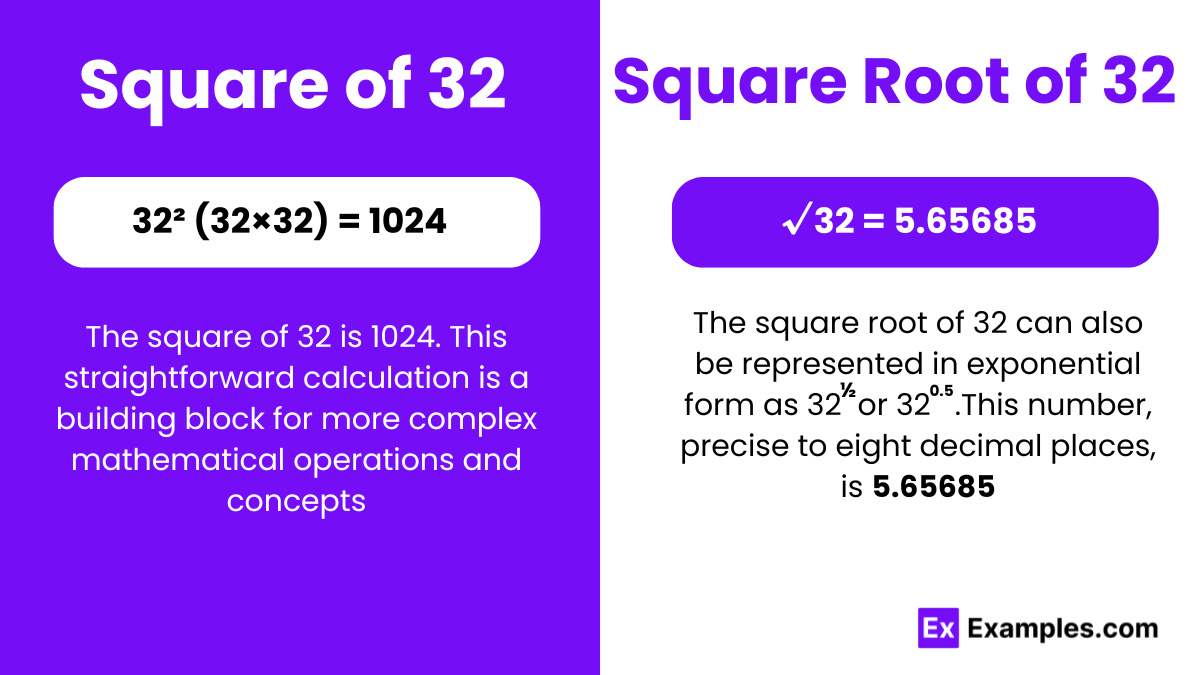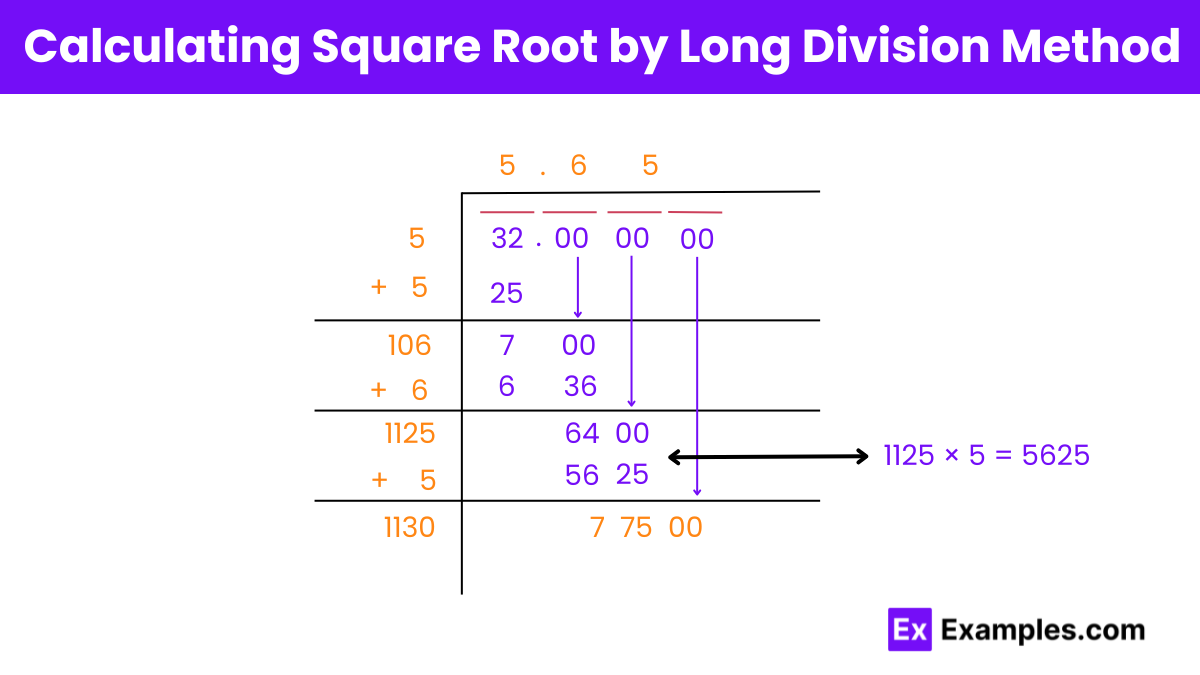What is the square of 32?
1024
256
64
512

To calculate the square of 8, you simply multiply32 by itself:
Therefore, the square of 32 is 1024.Geometrically, if you have a square with each side measuring 32 units, the total area enclosed by the square will be 1024 square units.
Understanding the square of 32 is essential in various mathematical contexts, including geometry, algebra, and arithmetic. It is a fundamental operation that finds applications in numerous real-world scenarios, such as calculating areas, volumes, distances, and solving mathematical problems.
Or
√32 = 5.656 up to three places of decimal
Mathematically, √32 represents the non-negative number whose square is equal to 32. In other words:
√32×√32 = 32
The square root of 32 can be expressed in radical form as √(2×16), where 16 is a perfect square. This simplifies to 4√2.
So, √32 = 4√2, where 4 is the numerical coefficient and √2 represents the square root of 2.
Geometrically, if you have a square with an area of 32 square units, the length of each side of the square will be approximately 4 times the square root of 2 units.
In decimal approximation, the value of √32 is approximately 5.65685.
Exponential Form: 32^½ or 32^0.5
Radical Form: √32 or 4√2
Rational numbers are those that can be expressed as a fraction of two integers, where the denominator is not zero. In other words, they can be written in the form a/b, where a and b are integers and b is not equal to zero.
Examples of rational numbers include 1/2, -3, and 5.
Examples of irrational numbers include √2, π (pi), and √3.
2. Long Division Method:
3. Newton’s Method:
4. Using a Calculator or Software:

By following these steps iteratively, you can refine your estimate gradually and approach the square root of 32 with increasing accuracy.
A perfect square is a number that can be expressed as the square of an integer. In other words, it is the product of an integer multiplied by itself. For example, 25 is a perfect square because it equals 5×5.
However, 32 cannot be expressed as the product of an integer multiplied by itself. Therefore, it is not a perfect square.
There are several methods to calculate the square root of 32, including estimation, long division, Newton’s method, or using a calculator or mathematical software.
The square root of 32 is related to concepts such as exponentiation, radicals, and quadratic equations, and it finds applications in geometry, algebra, calculus, and other branches of mathematics.
The square root of 32 has applications in various fields such as mathematics, physics, engineering, finance, and computer science, where precise calculations or measurements are required.
Text prompt
Add Tone
10 Examples of Public speaking
20 Examples of Gas lighting
What is the square of 32?
1024
256
64
512
Find the square root of 1024.
16
32
64
128
What is the value of 32 squared?
512
1024
1026
1028
If x² = 1024, what is the value of x?
32
-32
Both 32 and -32
64
What is the result of 32 raised to the power of 1/2?
16
32
47
87
What is the square of the square root of 1024?
64
32
1024
1028
What is the square of 16 divided by the square root of 1024?
2
4
6
8
What is the result when you subtract the square root of 1024 from 32?
0
2
4
8
If 1024 is a perfect square, what is its square root?
16
32
64
87
Find the square root of 1024 and multiply it by 2.
32
64
16
8
Before you leave, take our quick quiz to enhance your learning!

